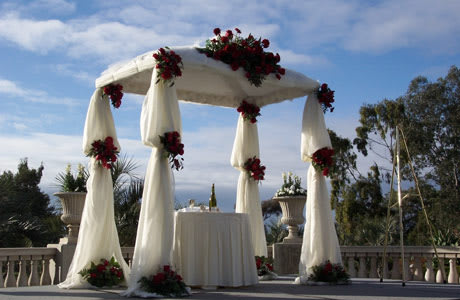A modern Israeli couple with a saga
On a crisp Jerusalem night, beneath a wedding canopy, Rabbi Mordechai Elon touches ashes to the groom’s forehead and cautions against taking for granted the fulfillment of the optimistic prophecy of Jeremiah, “Again shall be heard in this place and in the streets of Jerusalem the voice of joy and the voice of gladness, the voice of the bridegroom and of the bride.”
The guests couldn’t be faulted for gazing at Aderet, the beautiful, spirited bride, and Yishai, the handsome, serious groom, and thinking that this pairing was a natural. Only when the couple’s four grandfathers recite their blessing can one begin to guess from their accents at the family sagas and the love of Zion that has made this wedding possible.
One grandfather orchestrated the rescue of Jews from Denmark. A grandmother, a daughter of Romanian Satmar Hassidim, survived Auschwitz. To her engagement party, Aderet wore her great-grandmother’s Spanish gown, borrowed back from Beth Hatefutsoth. She’ll be the sixth-generation bride in her family to light her inherited candlesticks, grabbed hastily from a Parisian apartment as another great-grandmother fled home.
Among the guests, 100 hesder yeshiva students bounce on tiptoes, at once banishing the evening chill and expressing their fervor. Others arrive direct from the army, Galil rifles slung over their shoulders. Yishai’s parents are dear friends. On the other side, and I know the bride’s cousin, a physician who cared for my American cousin when she was wounded by a terrorist. A small town, Jerusalem.
In most of the world, the couple under the chupah would be too young to have their own sagas. But the groom’s story was printed first in these pages, and widely retold. A friend heard it in Texas and then again from a pulpit in California.
Who can forget that Saturday night, March 9, 2002? Terrorists struck first in a hotel in Netanya, murdering 13. In Jerusalem, tensions were high. On that Shabbat, Yishai, then 17, found himself on Rechov Ibn Gabirol, where he had volunteered to fill in as a youth group leader. After dark, he heard warnings and phoned the police. The admonitions were genuine, so he sent the 70 youngsters home.
Yishai’s friends showed up at the clubhouse. Stay, they urged him. They felt like sitting on the floor, singing soulful Hebrew songs, and he was their most versatile guitarist.
At 10:30 p.m., the powerful explosion shook them. Outside, people were running up and down Rambam Street. Yishai was a volunteer with Magen David Adom. He needed to help. The stench of burning wires, plastic, and flesh grew stronger as he approached the Moment Caf . He was used to working as part of a crew, but this time he’d arrived before the ambulances.
He leaned over one young person, but there was no breath. Another young woman was lying nearby. He saw her flinch. Blood gushed from her leg. Like many emergency crew volunteers, he usually carried a tourniquet. Not that Shabbat. But he did have something he could use. Yishai was wearing tzitzit, a small tallit with fringes. He stripped off his white shirt and removed the garment. Together with a man named Yaron, he turned the tzitzit into a tourniquet. Wrapped tight around the young woman’s leg, the cotton turned red. Minutes later, the ambulances arrived.
When Yishai got home, his clothes were soaked with blood. “I don’t have my tzitzit,” he told his mother. She was surprised. Yishai’s fringes were special – sky blue, made from a dye extracted from snails. He never went anywhere without them.
Across town, orthopedic surgeon Moshe Lifschitz rushed the young woman into the operating theater. Her bones were shattered and her femoral artery was torn in two places. He found the blue tzitzit, tied like a tourniquet around her leg. Whoever did this was thinking fast, he realized.
Jerusalem really is a small town. I know the injured woman, whose name is Efrat. I track down the surgeon. “So, Yishai saved her leg?” I ask him.
“No,” he answers. “I saved her leg. Yishai saved her life.”
Efrat underwent many months of additional surgery and a painful convalescence, all the time agreeing to speak on behalf of Israel. Now she’s fulfilling her dream of studying in England. Despite her sabra English, last month she won a university-wide competition for a prestigious scholarship. She sent Yishai and Aderet happy wishes from afar.
On the night before the wedding, Yishai and his family sat together within the Old City tunnels of the Western Wall. Holding hands, over and over they chanted the words Isaiah spoke of Jerusalem and with which we weekly greet the Sabbath bride – hitnari meafar kumi, “rise up from ashes.” Yishai gathered a handkerchief full of ashes.
Under the chuppah, the voices are full of joy and gladness. Yishai unfurls a brand new tallit to hold above their heads as he recites the Shehechiyanu. “Blessed art Thou, King of the universe, who has kept us alive, sustained us, and brought us to this season.”
The garment swings in an arc as he lifts it. The fringes are blue.
Reprinted with permission. Originally published on December 23, 2004.
Award-winning writer and lecturer Barbara Sofer grew up in a small town in Connecticut, and moved to Israel in 1971. She is a graduate of the University of Pennsylvania and the Hebrew University in Jerusalem. Her articles -taking on a wide range of subjects from ethnic cooking to terrorism–have appeared in The New York Times, The Boston Globe, Parents, Readers’ Digest, Woman’s Day, Hadassah Magazine and Inside Magazine among many others. She writes a biweekly column for the Friday Jerusalem Post. Visit her site at www.barbarasofer.com, or email her at bsofer@netvision.net.il.
This article also appeared on www.tekhelet.com.
The words of this author reflect his/her own opinions and do not necessarily represent the official position of the Orthodox Union.
